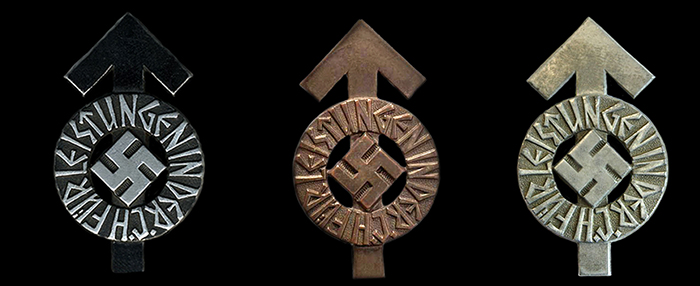
The Hitler Youth Proficiency Badge
(H J Leistungsabzeichen)
The award was instituted in three classes in June 1934 by Reichsjugendführer Balder von Schirach, as an incentive to improve the physical and ideological proficiency of the varying age groups of the growing membership of the Hitler Youth. It was stated at the time that the H J achievement badge was a prestigious award which every fit and ambitious Hitler boy and H J leader should aim for. It was only to be awarded by the Reichsjugendführer to those who meet the stringent requirements that had been laid down. Those who wished to be awarded the badge would have to take a very keen part in at least 8 ideology study periods. These would be held as part of weekly meetings. All members of the Hitler Youth were issued a Leistungsbuch to record the achievements of the members and then to act as a certificate of proficiency. For members of the Marine-H J and the Motor-H J there were to be additional tasks, which would test the disciplines specific to these respective organisations. DJ and H J boys were issued a book with one set of grading standards while the J M and B D M girls were given a book with another set. The award was primarily intended to test the abilities of the members in the following areas, Sport, Small-calibre (or air-rifle) shooting and Field Exercises.
The proficiency badge was awarded on three levels
Iron Class
Awarded to DJ and HJ members - restricted to boys of fifteen years old.
Bronze Class
Awarded to sixteen-year-old boys of the Hitler Youth.
Silver Class
awarded to seventeen-year-old boys of the Hitler Youth.
Award Criteria
The members undertook a test leading to an award of the badge that consisted of a four-part test, which showed clearly how all HJ training was military oriented.
Sports, athletics and gymnastics. 100 metres sprint, 300 metres run, long jump, putting the shot, throwing the hammer, Horizontal bar exercises and swimming.
Shooting with air rifles from the prone position, grenade throwing with dummies.
Field exercises, route marching in full kit, map reading, distance judging, effective use of terrain and camouflage.
Political knowledge. This comprised a slight knowledge of history and the absorption of Nazi dogma.
Regulations for wear
regulations specified that it would be worn on the left breast pocket. The badge could be worn by members of the HJ, SA, SS, RAD and the military on their uniform.
A cloth version was worn on the athletic shirt, or shorts, and a miniature version was authorised for wear on the lapel of civilian attire

The Hitler Youth Proficiency Badge - Iron, Bronze and Silver
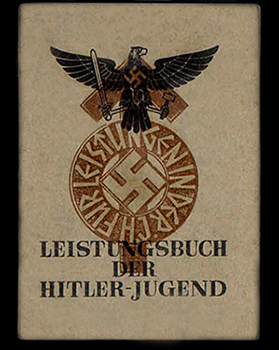
Hitler Youth Leistungsbuch
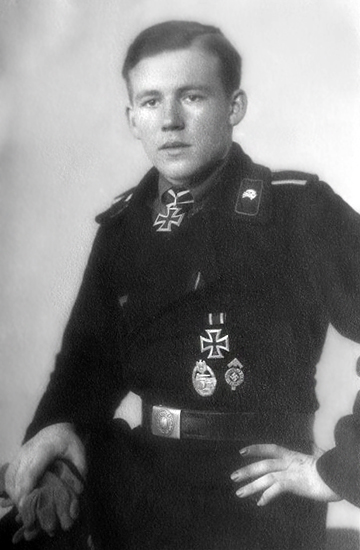
The Hitler Youth Proficiency Badge in wear
Hitler Youth Leader Sports Badge
On 18th January 1937 Reichsjugendführer Balder von Schirach, decreed that all HJ and DJ leaders from the rank of Fähnleinführer and higher to Gefolgschaftsführer and higher, including those on the RJF staff, Gebiet staff, Bann staff and Jungbann staff, would be required to pass a ten part test to be known as the leaders test exercises.
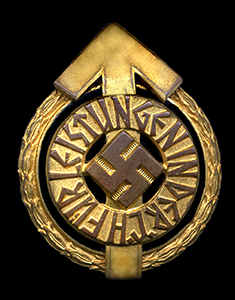
The Hitler Youth Leader Sports badge
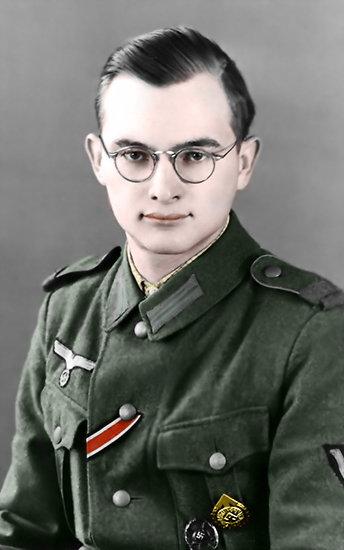
Hitler Youth Leader Sports Badge in wear
![]()
Pin of the German Youth Champion pre-1942
(Nadel des Deutschen Jugendmeisters)
the award of the "Pin of the German Youth Champion" was to recognize winners in the year-round sports competitions held by the Hitler Youth, pre-1942
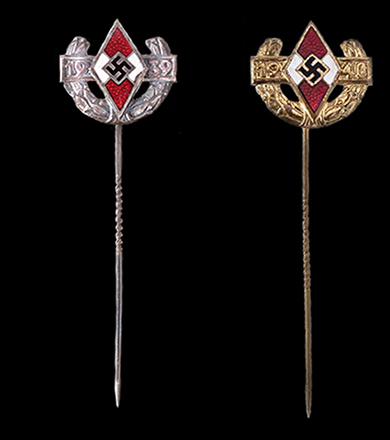
pin of the German youth Champion (Nadel des Deutschen Jugendmeisters) - 1939 in silver/1940 in gold

Gold, Silver and Bronze pins of the German youth Champion- 1941
Clasp of the German Youth Champion post-1942
(Nadel des Deutschen Jugendmeisters)
Instituted in 1942 by Reichsjungendführer Arthur Axmann, the award of the "Clasp of the German Youth Champion" was to recognize winners in the year-round sports competitions held by the Hitler Youth
Classes
Golden Clasp of the German youth Champion (Goldene nadel des Deutschen Jugendmeisters)
Sliver Clasp for second place winner (Nadel für den zweiten sieger)
Bronze Clasp for third place winner (Nadel für den dritten sieger)
Award Criteria
Golden Clasp of the German youth Champion (Goldene nadel des Deutschen Jugendmeisters)
presented to the first place winner in any individual or team national competition
Sliver Clasp for second place winner (Nadel für den zweiten sieger)
presented to the individual or team placing second in the competition
Bronze Clasp for third place winner (Nadel für den dritten sieger)
presented to the individual or team placing third in the competition
Regulations for wear
To be worn on the left breast pocket
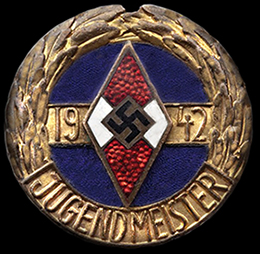
Golden Clasp of the German youth Champion (Goldene nadel des Deutschen Jugendmeisters) - 1942
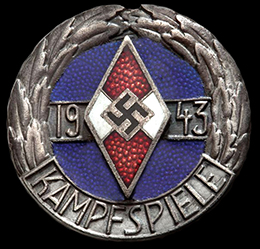
Sliver Clasp for second place winner (Nadel für den zweiten sieger) - 1943
The Bronze Clasp for third place winner (Nadel für den dritten sieger) had the same design as the clasp for second place but had the metal finished in a bronze and a bronze-coloured field replacing the blue enamel
Honour Badge of the National Champions
(Ehrennadel der Reichssieger)
Also instituted in 1942, the Honour Badge of the National Champions (Ehrennadel der Reichssieger) was for presentation to the victors of the National Victors Competition (Reichsiegerwettbewerbe)
Classes
Honour Badge of the National Champions (Ehrennadel der Reichssieger) in Gold
Honour Badge of the National Champions (Ehrennadel der Reichssieger) in Silver
Honour Badge of the National Champions (Ehrennadel der Reichssieger) in Bronze
Award Criteria
Honour Badge of the National Champions (Ehrennadel der Reichssieger) in Gold
Presented to the overall winner
Honour Badge of the National Champions (Ehrennadel der Reichssieger) in Silver
Presented to the second place winner
Honour Badge of the National Champions (Ehrennadel der Reichssieger) in Bronze
Presented to the third place winner
Regulations for wear
permitted to be worn permanently on the left breast pocket
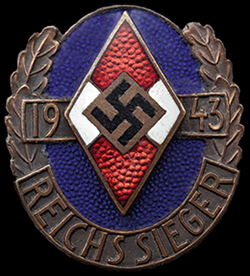
Honour Badge of the National Champions (Ehrennadel der Reichssieger) in Bronze - 1943
![]()
Hitler Youth Shooting Awards
(HJ-Schiessauszeichnungen)
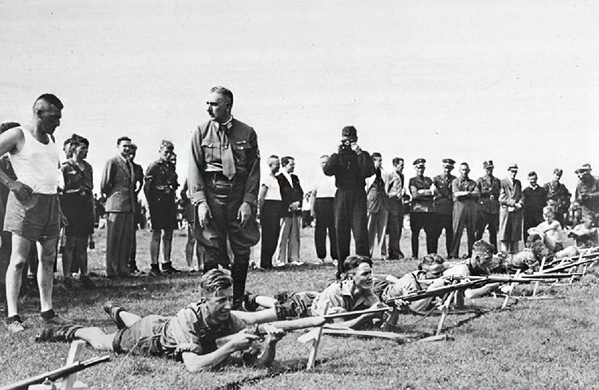
In 1936, Reichsjugendführer Balder von Schirach introduced a series of small bore rifle marksmanship qualification tests to stimulate competitive shooting among members of the HJ and DJ as part of the pre-military training of German youth.
From 1936 to 1941, von Schirach instituted a series of badges which were presented to those members on qualifying in the various categories
Award Criteria
For members of the HJ/DJ aged 14 and over.
Classes
Anfängerklasse (Beginner Class) instituted in 1936
Five rounds in the prone position with rifle supported
Five rounds in the prone position with rifle unsupported
Five rounds in the kneeling position with rifle unsupported
Ausbildungsklasse (Sharpshooter class) instituted in 1938
Ten rounds in the prone position with rifle supported
Ten rounds in the prone position with rifle unsupported
Ten rounds in the kneeling position with rifle unsupported
Ten rounds in the standing position with rifle unsupported
Sonderklasse (Master marksman class) instituted in 1941
Ten rounds in the prone position with rifle supported - maximum point score
Ten rounds in the prone position with rifle unsupported - maximum point score
Ten rounds in the kneeling position with rifle unsupported - maximum point score
Ten rounds in the standing position with rifle unsupported - maximum point score
Awards
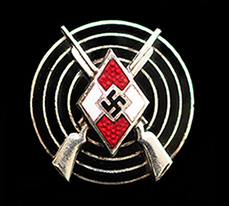
Anfängerklasse (Beginner Class)
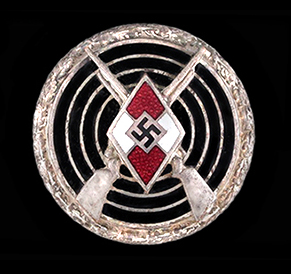
Ausbildungsklasse (Sharpshooter class)
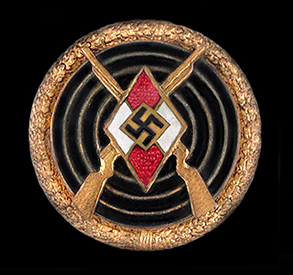
Sonderklasse (Master marksman class)